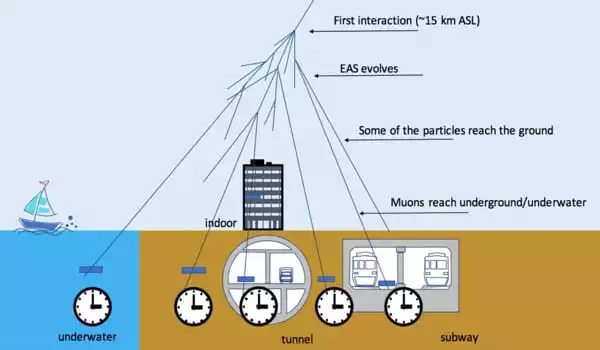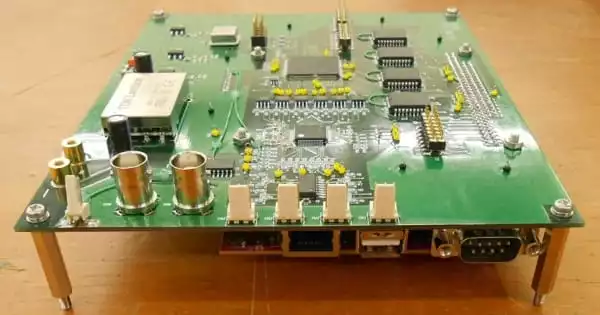The world has a reliable, accurate timekeeping system that keeps our clocks in sync. It is used in every aspect of human life, from financial systems to satellite navigation, computer and phone networks, and GPS. However, the current system is not ideal and is susceptible to cyber-attack and disruption. Given the societal importance of accurate timekeeping, specialists are constantly seeking for methods to improve the system and add redundancy. The University of Tokyo has taken an important step in this direction by establishing a novel method of time synchronization that uses cosmic rays to calibrate the world’s clocks.
Various technologies, networks, and institutions benefit from or require accurate timekeeping to synchronize their actions. Current methods of synchronizing time have significant limitations that a newly proposed method tries to remedy. The cosmic time synchronizer operates by synchronizing equipment in the vicinity of cosmic ray events detected by those devices. This could deliver accurate timing capabilities to remote sensing stations or even underwater, where conventional approaches cannot. Early testing show promise, but the main problem may be in implementing this new technique.
Satellite-based time synchronization has many blind spots, such as at the poles, in mountainous regions, or underwater, and CTS could address these and other gaps. As with any new technology, the issue is one of adoption.
Professor Hiroyuki Tanaka
Humanity is inextricably linked with the concept of time. Historically, we measured time and coordinated our actions by looking to the stars, the sun, and the moon. It’s fitting, then, that scientists are once again looking to the stars to improve our ability to tell time. Professor Hiroyuki Tanaka of Muographix at the University of Tokyo invented and tested a method to synchronize various devices so that they agree on the time that makes use of cosmic rays from outer space. It’s appropriately known as cosmic time synchronization (CTS).
“Nowadays, keeping correct time is quite simple. For example, atomic clocks have been doing this for decades” Tanaka explained. “However, these are massive and expensive machines that are easily disrupted. This is one of the reasons I’ve been working on a better approach to keep track of time. The other is that, like time measurement, location measurement could be improved. So, in essence, CTS is a prelude to a potential replacement for GPS, although that is still a long way off.”

Because certain technologies are becoming increasingly crucial in many facets of life, it is critical for devices to share a sense of time. Computer networks in charge of financial transactions must agree on a time frame in order to assure transaction order. There are sensors that work together to observe numerous physical occurrences that must agree on time in order to ascertain, for example, the origin of a particular reading. These sensors might even be used as part of a disaster warning system.
CTS is powered by cosmic rays from outer space that strike the atmosphere roughly 15 kilometers high, causing particle showers that include muons. Muons travel very close to the speed of light, hitting the ground practically instantly. They can readily pierce water or rock and spread out to cover a few square kilometers of ground as they go. Independent CTS-enabled sensors in the same particle shower can detect the incoming muons, which will have a unique signature to the cosmic ray event that produced them.
By sharing this information, CTS devices can confer with one another and synchronize their clocks according to when the cosmic ray event took place. The ultrahigh-energy cosmic ray strikes occur frequently enough, about a hundred times per hour over every square kilometer of Earth, for CTS devices to work together in real time.
“The theory is sound, and the necessary technology, detectors, and timing electronics are currently available. As a result, we could put this notion into action pretty rapidly” Tanaka stated. “Satellite-based time synchronization has many blind spots, such as at the poles, in mountainous regions, or underwater, and CTS could address these and other gaps. As with any new technology, the issue is one of adoption. Thomas Edison began by lighting up Manhattan with a single light bulb. Perhaps we should start with a city block, then a district, and finally we’ll synchronize the entire city of Tokyo and beyond.”





